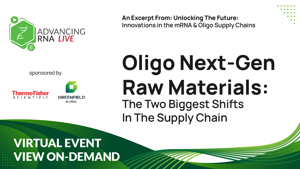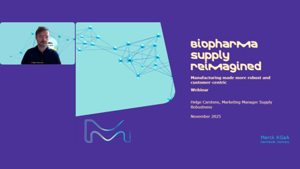SUPPLY CHAIN ARTICLES
-
Picasso, Pick-Up Lines, & Personalized Medicine: mRNA's Path Forward
Overall, my presentation on what the mRNA industry can learn from the artist Picasso singled out a few specific areas from which I felt our industry could garner greater inspiration and operational prowess. But given how “collaborative” many of these sources of inspiration are, I’ve introduced each of my takeaways with a surprisingly relevant (albeit bad) art-themed pick-up line. After all, if there’s one sector that knows it takes more than one to “tango,” it’s the mRNA industry.
-
Moderna & The Global mRNA Supply Chain: Regulatory Lessons Learned
One of the most important reminders I took away from Moderna’s experiences ushering its mRNA vaccine onto the global market is that a commercial manufacturing process must also be accompanied by a commercially ready supply chain. Though sufficient physical volumes of each raw material and a redundant supplier network are necessities, physical scale is not the only “CQA” for which we must account when commercializing our supply chain.
-
The Expanding Patent Landscape For RNA-Based Therapeutics
The COVID-19 pandemic thrust RNA-based therapeutics into the spotlight. Before that, only a handful had received regulatory approval. Why are RNA-based therapeutics seeing more patent activity now and how should biotech companies mitigate patent risks? Attorneys from Neal Gerber Eisenberg share their insights.
-
Plasmid Production: 3 Key Takeaways For mRNA Manufacturing
Following my latest Live panel on analytical and manufacturing technology innovations for mRNA production, I wanted to provide a few high-level takeaways I gleaned from our discussion on the overlooked darling of the mRNA space: The plasmid.
-
Can America's Retreat On mRNA Be Europe's Opportunity?
With HHS winding down mRNA vaccine development under BARDA, could Europe seize the opportunity to lead in mRNA innovation? Exploring the policy shift's implications.
-
Multidisciplinary mRNA: What Can We Learn From Other CGTs?
Overall, there are four high-level best practices/mindsets I proposed during a recent presentation that I believe will be crucial for us to bring some talented RNA therapeutic role models to the forefront. But there is one best practice that I think is worth emphasizing more than the others.
ARTICLES, APP NOTES, CASE STUDIES, & WHITE PAPERS
-
Chemical modifications on CRISPR gRNAs enhance stability, editing efficiency, and reduce immune responses, enabling in vivo applications and clinical success.
-
Learn how a robust understanding of the RNP’s critical process parameters and CQAs is crucial for ensuring product consistency, enhancing patient safety, and maintaining regulatory compliance.
-
CRISPR technology is revolutionizing cell and gene therapies, but how do CRISPR clinical trials work? Follow this explanation of CRISPR therapies from the discovery phase to FDA approval.
-
Explore a solution for biopharmaceutical companies concerned about the risks an increase in campaign volume can pose to their production timeline.
-
Learn about the drawbacks of antibiotic resistance that can cause side effects in patients and how an antibiotic-free approach can ease the burden of regulatory compliance and accelerate development.
-
This review suggests technical remedial options for the production of pDNA and focuses on mRNA synthesis, purification, and encapsulation.
-
GMP-Source, which is a term we coined, serves the purpose as a highly qualified raw material for a generation of virus, messenger RNA template, and transgenic expression of proteins.



























